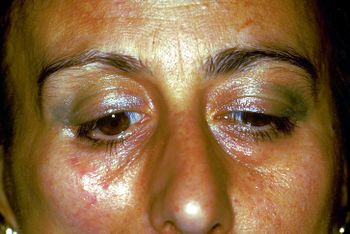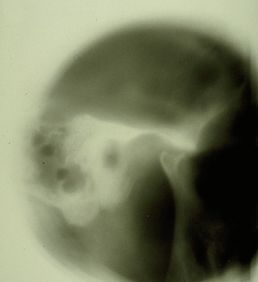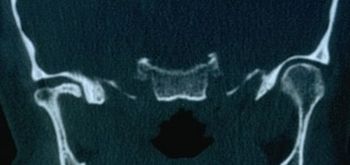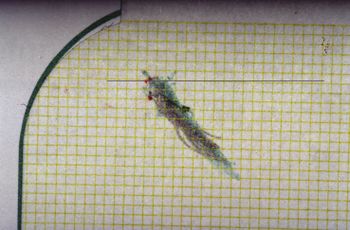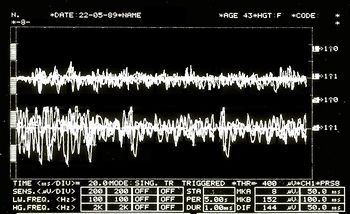The logic of the classical language abstract
Abstract
Masticationpedia presents a transformative exploration into the integration of computational logic into medical discourse, particularly within the field of craniofacial biology. This innovative approach moves beyond traditional clinical communication, utilizing encrypted machine languages and advanced technologies like gene sequencing and high-resolution imaging to significantly enhance diagnostic accuracy and treatment efficacy. Central to this discourse is the role of epigenetics and phenomics, which provide a deeper understanding of craniofacial anomalies through the complex interplay of genetic and environmental factors, advocating for personalized medical treatments. Additionally, the text discusses the application of classical logic in medical diagnostics, which refines the development of precise diagnostic criteria and tailored treatment plans. By promoting an interdisciplinary approach and advancing a more dynamic logical framework in medical practices, Masticationpedia aims to set new standards in patient care, pushing the boundaries of scientific research to better address the intricate challenges of craniofacial disorders.
Introduction
In the previous chapter, dedicated to the "Logic of Medical Language", we shifted focus from traditional clinical signs to an encrypted machine language, highlighting the innovative contributions of Donald E. Stanley, Daniel G. Campos, and Pat Croskerry. They emphasized the use of time as an information vector in diagnostics[1][2].
This paradigm shift does not diminish the value of clinical history but enhances it by integrating a computational approach to validate medical diagnostics. "Craniofacial Biology" is explored comprehensively, with pivotal studies by Townsend and Brook challenging existing paradigms and proposing new clinical applications through interdisciplinary approaches[3][4].
Additionally, the role of epigenetics and phenomics in this field is underlined, offering new insights into dental and craniofacial anomalies through the genetic, epigenetic, and environmental interplay[5][6].
This extensive review also incorporates diverse studies, illustrating the dynamic complexities of craniofacial development and the significant implications for future dental practices[7].
In summary, this chapter emphasizes not only the advanced computational methodologies enhancing diagnostic precision but also the critical interdisciplinary perspectives necessary for holistic patient care in craniofacial anomalies.
Mathematical Formalism
In this chapter, we revisit the clinical case of Mary Poppins, who has been suffering from Orofacial Pain for over ten years due to "Temporomandibular Disorder" (TMD). This section delves into the complexity of using Classic Language Logic to achieve a precise diagnostic definition.
Propositions
The simplest propositions in logic can be combined using logical operators and quantifiers to construct complex logical statements, enhancing the precision and rigor required in mathematical and scientific reasoning. Key logical operators include:
- Conjunction (),
- Disjunction (),
- Negation (),
- Implication (⇒),
- Logical consequence (),
- Universal quantifier (),
- Existential quantifier ().
These tools help form the backbone of logical reasoning used to navigate complex diagnostic processes in medical practice.
Proof by Contradiction
This method involves demonstrating that the negation of a proposition leads to a contradiction, thereby proving the original proposition under the principle of the "law of excluded middle". This fundamental aspect of classical logic asserts that a proposition must be true if its negation is false[8].
Predicates
Predicates are expressions that assert something about a set of elements, such as "all volleyball players are tall" ( being volleyball players). They are used extensively to describe groups of patients or medical conditions, providing a structured way to apply logical reasoning in medical diagnoses.
|
«{{{1}}}» |
Further diagnostic support is provided through the analysis of axiographic traces and surface electromyography, confirming the presence of TMD based on the observed asymmetry and functional abnormalities in masticatory muscles[9][10].
2nd Clinical Approach
This section presents further clinical evaluations including CT scans and electromyographic analysis which provide deeper insights into the structural and functional status of the temporomandibular joint (TMJ). These findings are critical in confirming the diagnosis of TMD and understanding its impact on orofacial pain.
Propositions in the Dental Context
In an attempt to apply mathematical formalism to interpret the dentist's diagnostic conclusions using classical logic language, we define the following predicates:
- Normal patients (where "normal" refers to patients commonly encountered in a specialist setting)
- Presence of bone remodeling with detected osteophyte from stratigraphic exams and condylar CT
- Temporomandibular Disorders (TMD) resulting in orofacial pain (OP)
- Specific patient: Mary Poppins
We establish that for every normal patient , if they test positive for the TMJ radiographic examination [see Figures 2 and 3], then they are affected by TMD . Consequently if Mary Poppins tests positive (and is considered a "normal patient") for the TMJ radiographic exam , it follows that she too is affected by TMD . This can be formally expressed as:
To verify the truthfulness of this proposition, we resort to proof by contradiction. If the negation of the proposition generates a contradiction, we can conclude that the original hypothesis of the dentist is correct:
Propositions in the Neurological Context
Suppose the neurologist contests conclusion (1), arguing that Mary Poppins does not suffer from TMD or that, at least, TMD is not the primary cause of her Orofacial Pain. Instead, he hypothesizes that Mary suffers from neuromotor type Orofacial Pain (nOP), classifying her not as a 'normal patient' but as a 'specific patient' (atypical for the dental specialist).
The neurologist's position can be formalized as follows:
To validate this hypothesis through proof by contradiction, consider its negation:
Compatibility and Incompatibility of Statements
The complexity arises when the dentist presents a series of statements based on clinical reports, such as stratigraphy and computed tomography (CT) of the temporomandibular joint (TMJ), indicating an anatomical flattening of the joint, axiography of the condylar paths with a reduction of cinematic convexity, and an electromyographic (EMG) interference pattern showing asymmetry on the masseters. These evidences can be considered co-causes of damage to the temporomandibular joint and, consequently, responsible for "Orofacial Pain".
Documents, reports, and clinical evidence can be used to make the neurologist's statement incompatible and support the dentist's diagnostic conclusion. To do this, we present some logical rules that describe compatibility or incompatibility according to classical language logic:
- A set of sentences and a number of other sentences or statements are logically compatible if, and only if, their union is coherent.
- A set of sentences and a number of other sentences or statements are logically incompatible if, and only if, their union is incoherent.
Let's examine this concept with practical examples. The dentist presents the following statement:
: Following the personalized techniques suggested by Xin Liang et al. that focuses on the quantitative microstructural analysis of the bone value fraction, trabecular number, trabecular thickness, and trabecular separation on each slice of a TMJ CT, it appears that Mary Poppins is affected by Temporomandibular Disorders (TMDs) and the consequence causes orofacial pain.
However, to further confirm the diagnosis, the dentist presents a series of additional assertions that should pass the compatibility filter described above, thus establishing a coherent basis for the diagnosis of TMD in Mary Poppins.
Bone remodeling: The flattening of the axiographic traces shown in Figure 5 indicates the joint remodeling of Mary Poppins' right TMJ. This report can be related to a series of research and articles confirming how malocclusion can be associated with morphological changes of the temporomandibular joints, particularly if related to age. Indeed, the presence of chronic malocclusion can aggravate the scenario of bone remodeling.
Sensitivity and Specificity of the Axiographic Measurement: A study was conducted to evaluate the sensitivity and specificity of the data obtained from a sample of patients with temporomandibular joint disorders, using the ARCUSdigma axiographic system. The results showed a sensitivity of 84.21% for the right TMJ and 92.86% for the left TMJ, with a specificity of 93.75% and 95.65%, respectively.
Alteration in Condylar Paths: Urbano Santana-Mora and colleagues conducted a study on 24 adult patients suffering from severe chronic unilateral pain, diagnosed with Temporomandibular Disorders (TMD). The research focused on the analysis of various functional and dynamic factors, including masticatory function, the remodeling of the temporomandibular joint (TMJ) or condylar paths (CP), and lateral jaw movement or lateral guidance (LG). The CPs were evaluated using conventional axiography, while the LG was examined through kinesiographic tracing analysis. It was found that seventeen patients, corresponding to 71% of the total sample, habitually preferred to chew on one side. The mean and standard deviation of the CP angles were 47.90 (± 9.24) degrees, while the mean of the LG angles was 42.95 (± 11.78) degrees.
EMG Interference Pattern: M.O. Mazzetto and collaborators demonstrated that there is a positive correlation between the electromyographic activity of the anterior temporal muscles and the masseter and the 'Cranio-Mandibular Index' (CMI), with a value of . This suggests that the use of CMI to quantify the severity of Temporomandibular Disorders (TMD) and electromyography (EMG) to assess the function of the masticatory muscles can represent a significant diagnostic and therapeutic element.
Given the evidence presented and the statements made, the dentist can legitimately claim that the set of sentences , and a number of other positive clinical assertions or data are logically compatible. This is because their union, , turns out to be coherent.
- ↑ Stanley DE, Campos DG, «The logic of medical diagnosis», in Perspect Biol Med, 2013».
PMID:23974509
DOI:10.1353/pbm.2013.0019 - ↑ Croskerry P, «Adaptive expertise in medical decision making», in Med Teach, 2018».
PMID:30033794
DOI:10.1080/0142159X.2018.1484898 - ↑ Townsend GC, Brook AH, «The face, the future, and dental practice», in Aust Dent J, 2014».
PMID:24646132
DOI:10.1111/adj.12157 - ↑ Sperber GH, Sperber SM, «The genesis of craniofacial biology», in Aust Dent J, 2014».
PMID:24495071
DOI:10.1111/adj.12131 - ↑ Williams SD, Hughes TE, Adler CJ, Brook AH, Townsend GC, «Epigenetics: a new frontier in dentistry», in Aust Dent J, 2014».
PMID:24611746
DOI:10.1111/adj.12155 - ↑ Yong R, Ranjitkar S, Townsend GC, Brook AH, Smith RN, Evans AR, Hughes TE, Lekkas D, «Dental phenomics», in Aust Dent J, 2014».
PMID:24611797
DOI:10.1111/adj.12156 - ↑ Peterkova R, Hovorakova M, Peterka M, Lesot H, «Three‐dimensional analysis of the early development of the dentition», in Aust Dent J, 2014».
DOI:10.1111/adj.12130 - ↑ «[1]»».
- ↑ Castroflorio T, Talpone F, Deregibus A, Piancino MG, Bracco P, «Effects of a Functional Appliance on Masticatory Muscles of Young Adults Suffering From Muscle-Related Temporomandibular Disorder», in J Oral Rehabil, 2004».
PMID:15189308
DOI:10.1111/j.1365-2842.2004.01274.x - ↑ Maeda N, Kodama N, Manda Y, Kawakami S, Oki K, Minagi S, «Characteristics of Grouped Discharge Waveforms Observed in Long-term Masseter Muscle Electromyographic Recording: A Preliminary Study», in Acta Med Okayama, 2019».
PMID:31439959
DOI:10.18926/AMO/56938







